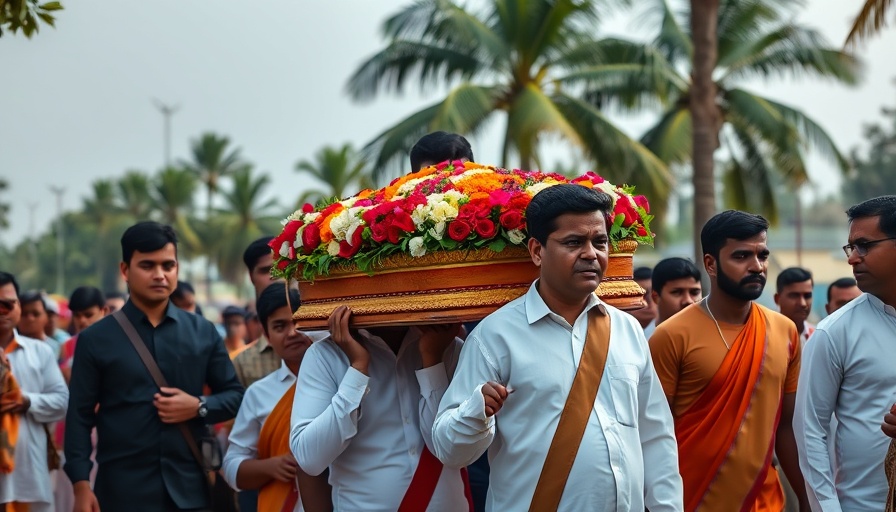
Miraculous Escape from Tragedy: The Surreal Journey of Vishwash Kumar Ramesh
In a haunting reminder of the fragility of life, Vishwash Kumar Ramesh emerged as the sole survivor from the wreckage of Air India flight AI171, which tragically crashed just moments after takeoff from Ahmedabad, killing 241 individuals on board and several more on the ground. Just a day after receiving medical treatment for his injuries, Ramesh bravely laid his brother to rest, further highlighting the deep personal loss amid this staggering tragedy.
The Harrowing Crash: What We Know
This devastating incident unfolded last Thursday when flight AI171, bound for London's Gatwick, unexpectedly plummeted less than a minute after departure. Amidst the chaos, Ramesh, who managed to unbuckle from his emergency exit seat in row 11, believed he had narrowly escaped death. He conveyed the shock of his ordeal to Indian state broadcaster DD News, sharing, "I thought I was going to die. But when I opened my eyes, I realized I was alive." His miraculous survival story starkly contrasts against the horrific circumstances faced by his fellow passengers.
The Human Toll: Grief and Mourning
The aftermath of the crash left countless families in anguish. As Ramesh conducted his brother's last rites, fellow victims' family members hovered near morgues, desperate for closure. India's Home Minister Amit Shah indicated the struggle faced in identifying remains due to the extreme fire damage caused by the immense quantity of aviation fuel on board—125,000 liters—increasing the challenges for authorities tasked with providing families with their lost loved ones.
Investigation Into the Catastrophe: Seeking Answers
At the forefront of ongoing investigations, Indian authorities, supported by teams from the UK and US, are analyzing the black boxes from the aircraft. These crucial devices—the cockpit voice recorder and the flight data recorder—are expected to yield critical insights into what transpired leading up to the disaster. Preliminary findings from a high-level governmental committee are anticipated within three months, underscoring the urgency to identify the factors that led to this catastrophic event.
A Broader Reflection on Air Travel Safety
This incident raises profound questions about aviation safety standards, particularly concerning the Boeing 787 fleet. Immediately following the crash, Air India announced a thorough inspection across its entire fleet of 33 Boeing aircraft, evidencing a proactive approach to passenger safety. Although inspections are slated to conclude shortly, the 15% reduction in international services reflects both a commitment to safety and the ongoing impact of geopolitical turmoil in regions such as the Middle East.
Wider Implications: Industry and Public Safety
The consequences of such tragedies extend beyond the immediate loss of life. The aviation industry continuously evaluates technological improvements and safety protocols, ensuring that similar occurrences are minimized. Collaborative inquiries amongst international aviation authorities aim to foster greater scrutiny over manufacturing and operational standards, further enhancing safety measures.
Conclusion: The Path Forward for Air Travel
The heartbreaking story of Ramesh, the sole survivor of the tragic Air India crash, resonates deeply with the global community. As families grieve their losses, it’s imperative for the aviation sector to analyze failures and make necessary changes to prevent future disasters. Ramesh’s ordeal serves as a reminder that behind every statistic is a profound human story—a narrative that demands attention and action from those who govern air travel.
As the investigation unfolds and bodies are laid to rest, the discourse surrounding aviation safety must continue. The industry must not only examine the facts surrounding this crash but also commit to transparency and improvement, paving the way for a safer future in air travel.
 Add Row
Add Row  Add
Add 



Write A Comment